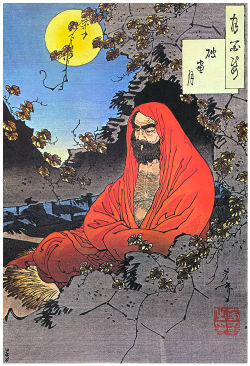Northern Shaolin History
The History of Northern Shaolin Kung Fu dates back to the year 495 A.D., when the Shaolin Buddhist Monastery was built in Honan province in Northern China honoring the buddhist monk who brought Buddhism to China.The Monk’s name was Badra. In order to defend the temple from attack, the monks developed a martial art system known as Ch’uan (Fist Method). Ch’uan Fa combined Buddhist meditative practices with self defense techniques.
Northern Shaolin Kung Fu emphasizes extension in striking, with deep stances and dynamic kicking methods. The northern styles develop flexibility, strength, coordination, balance, and agility. The Theory of Northern Shaolin is that power is developed through the rigorous training of extended postures, which could be condensed into shorter strikes when used in fighting. Northern training also instills a great amount of versatility in movement and technique.
At the Lohan School we teach the traditional Northern style of Shaolin. This is the largest of the northern lineages taught today, and is taught in a systematic fashion.
Shaolin History of Bodhidharma

Bodhidharma founded his chinese lineage at the Shaolin Temple in Honan province. Later in the seventh century, a Shaolin Temple was established in Fukien province, Southern China.
The Southern Temple developed different methods to practice than the Northern Temple. The principles of Shaolin Buddhism were adapted to meet the needs of the people living in the South. Even the Kung Fu developed differently.
The patron Buddha of both Fukien and Honan Temple is Kwan Kung (General Kwan). He is the protector of the Shaolin tradition and all other martial arts.
Lohan School of Shaolin History
From it’s humble beginnings in 1994, with just a handful of students practicing on the street fronting Sifu Steve’s home, to various halls in churches and dance studios, to China town Plaza and finally to it’s current site in China Town, it can be said that the Lohan School has come a long way.
Today, there is a respectable number of students, both at the school and in their community outreach programs. The students perform at many community events, casinos and convention functions, and private parties not only to promote the Chinese culture, but also to fund raise for the school which are incentives for them. From one Chinese lion, they can now perform with as many as 7 lions, a 63′ dragon, several drums, and an array of flags, banners and weapons. The school has also developed several senior instructors who teach not only at the school, but also in the various athletic, recreation and community centers.
Besides the regular classes, the school has held several workshops and seminars with visiting Buddhist Priests, Tao Masters, Martial Arts Masters and Spiritual healers. They’ve also participated in martial events, not only in Las Vegas, but also in Mexico and California. The recently held a Tai Chi retreat in Maui, Hawaii, and plan to do many more in the future.
The school also offers special classes in spiritual and herbal healing, and combines different cultural teachings through music and dance classes.